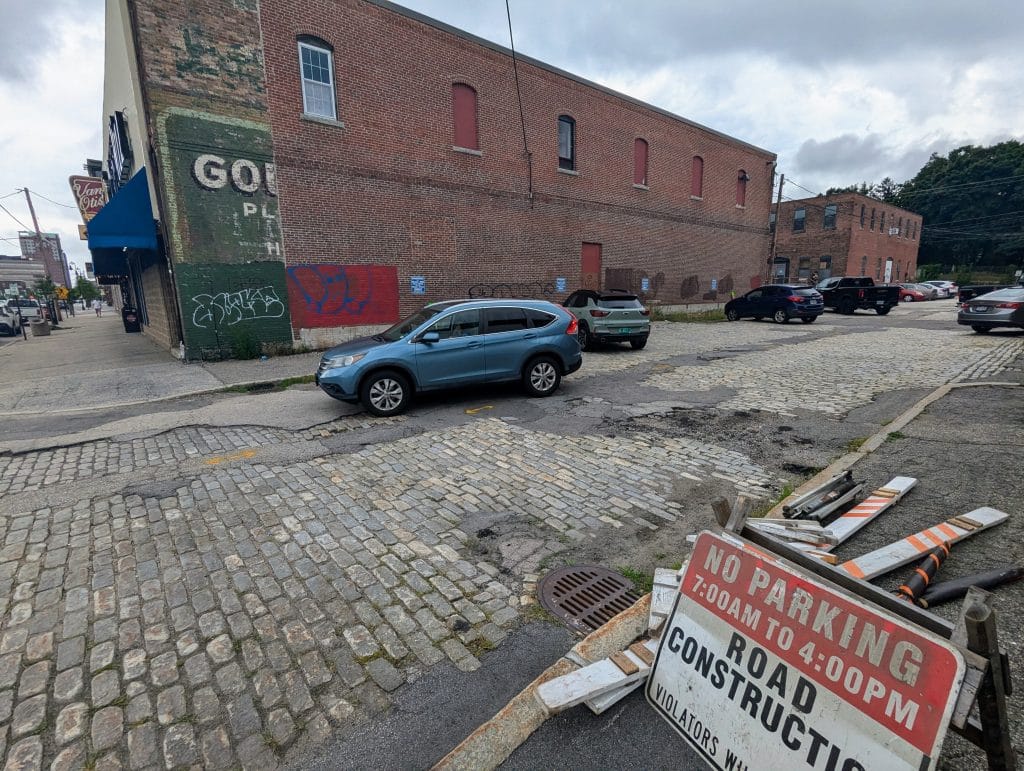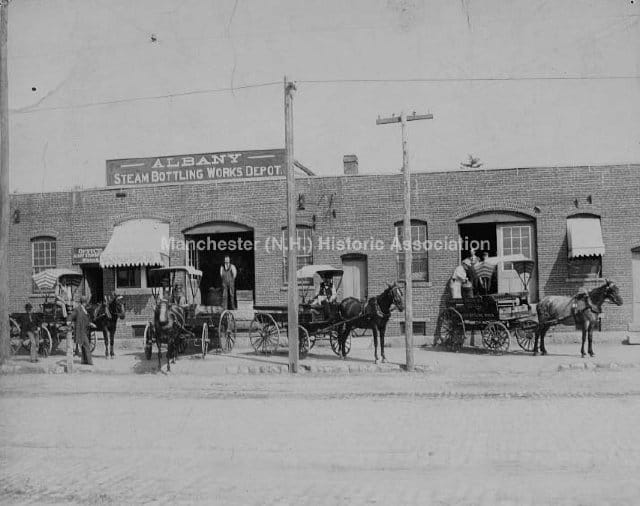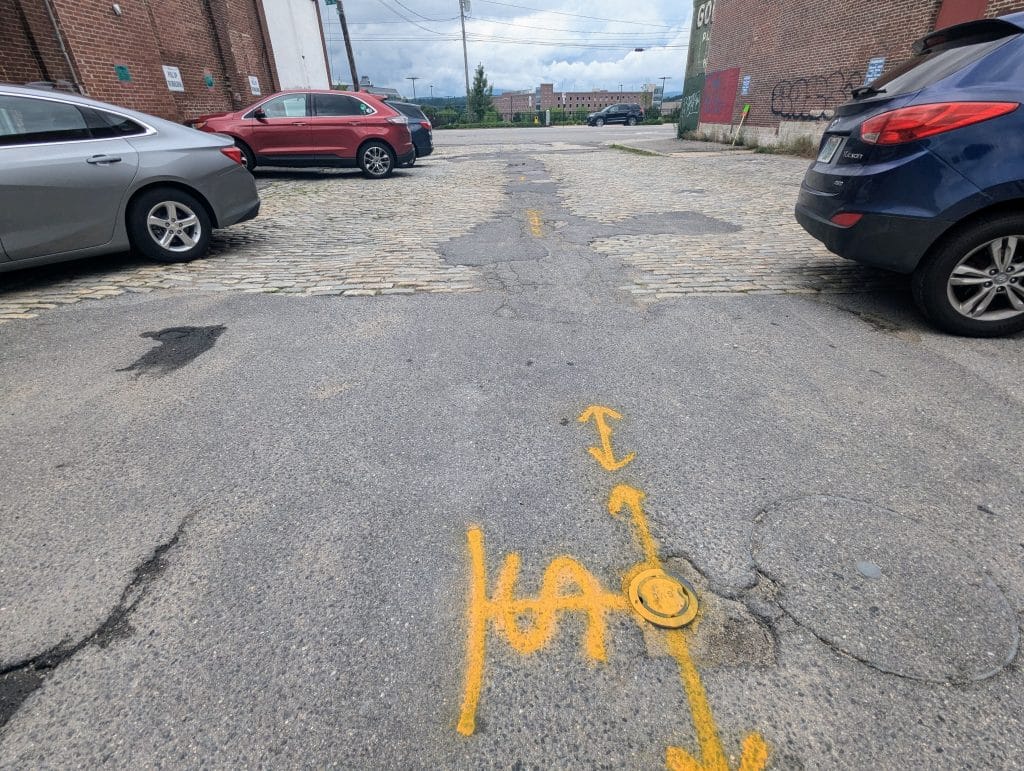End of the road for Grove Street cobblestones
If those cobblestones could talk they might say something like “Wait! Give us another chance.” Alas, the cobblestones on Grove Street which, by some accounts could be the last vestige of the city’s horse-and-buggy past, are about to hit the bricks, so to speak.

MANCHESTER, NH – If those cobblestones could talk they might say something like “Wait! Give us another chance.” Alas, the cobblestones on Grove Street which, by some accounts could be the last vestige of the city’s horse-and-buggy past, are about to hit the bricks, so to speak.
On Wednesday the Highway Department will begin removing the craggy old rocks, replacing them with smooth, black, well-striped asphalt – better for parking but hardly a conversation starter, as the cobblestones were over at Antiques on Elm Tuesday. Proprietor Marti Jones says she totally gets the historic implications of removing the cobblestones. After all, she’s in the business of nostalgia.

“I see the good and the bad. There are safety reasons,” she says, noting that it’s easy to stumble on the stones which have shifted over time to create a fun-house mirror sort of feeling as you walk across the wavy array of time-worn stones to one of the nearby Elm Street businesses.
“Also fire trucks can’t get through, and plowing is tough. But it’s also sad to see them go,” Jones says.
And she’s not the only one waxing nostalgic over the cobblestones. Joyce Hutchins, who’s lived her whole live in the city and is a vendor at the downtown antique collaborative, says she will miss them.
“It’s awful. I remember all the cobblestone streets that led down to Canal Street,” says Hutchins.

Customer Roxanne Lydon weighed in as she plopped an antique hurricane lamp on the counter for purchasing, alongside a vintage Kate Spade leather handbag. “They need to leave them. It’s part of the charm of Manchester,” Lydon says, who wondered out loud what would become of the stones.
“Maybe you could recover them and sell them here for $5 a brick,” she said to Jones, who figured the city was probably just going to recycle them somehow.
In fact, the stones will be delivered to the city’s “drop-off” station at 500 Dunbarton Road, according to Caleb Dobbins, Chief Engineer for the city’s Highway Department.
“There is already a pile there from other streets from what I am told and the fee is $2/stone. Cheap for a piece of history, I guess,” Dobbins said.
He explained that once the work is completed Grove will be one-way between Elm and Willow streets, similar to Hayward Street, to promote the use of the signalized intersection at Valley Street so motorists can safely access/cross Elm Street.

Dobbins said Grove Street is not THE last cobblestone in the city but it is one of the few remaining.
“There is still a section on Old Granite Street (southbound), adjacent to the Jewel Nightclub building that remains. There is also a belief that there may still be cobblestone sections remaining under Elm Street. I suspect that throughout the city there are remnants of this construction that remain, since just this year we found a block of Wilson Street that, when we were doing the pavement work, where we found had cobblestone gutter lines that extended out about 4-feet from the old curb line,” Dobbins says.
Grove Street was accepted by the city in 1907, although it could have been constructed earlier than that. Dobbins said the stones likely were sourced locally, since quarries and other sources of building materials existed in the area that were transported by horse and wagon.
Although it’s technically a street, it feels more like an alley, says Jones, one she shares with her across-the-alley neighbor, Music Mill.
Aside from losing the unique look of the cobblestone Music Mill General Manager Craig Peterson says he’s a fan of the project.
“The only thing I don’t like is that they’re going to make it two-hour parking and a lot of my customers come and spend more time than that here, but the rest of it, I like,” he says.

For instance, there will be no curbs which will open up the space, and it will become a one-way street, also good in Peterson’s book. He was told the project could take anywhere from a week to a month to complete, depending on how things go – it’s not your usual repaving job.
Over the nine years he’s been at Music Mill he’s had constant complaints about the ruts created by the sinking stones.
“Women in heels especially have a hard time with it. I have no personal connection to the cobblestone and the old-timey nostalgic vibe, and while it would have been nice to see it restored for a retro look, I’m sure that would cost too much for the city,” Peterson says.
“And I’m just happy my car won’t feel like it’s shaking apart anymore when I drive over the cobblestones,” he adds.

